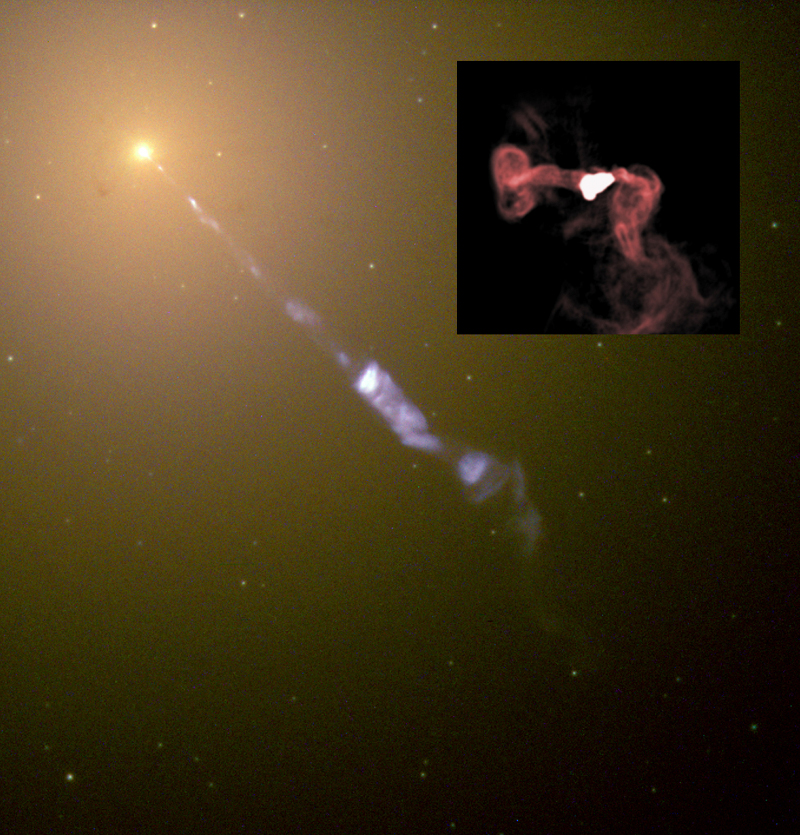High-resolution image of supermassive black hole shows engine of destruction

The large image shows the jet streaming from the center of the galaxy M87, in visible light. The inset zooms in on the black hole, and shows the swirling gas around the galaxy’s core. M87 is one of the largest galaxies known, and has the largest-known black hole, estimated around 6.6 billion times the mass of the Sun.
Thanks to years of observation, all but the most stubborn astronomers are convinced: black holes exist. Vast numbers of objects that are simultaneously too massive and occupy too little space to be anything except black holes have been found, both within our galaxy and at the cores of nearly every other galaxy. However, many details of black holes predicted by theory are difficult to confirm observationally, simply because black holes are too small relative to their masses. In particular, the event horizon—the boundary within which nothing can escape—is typically very small, so even our best telescopes have yet to measure one.
New observations from the Event Horizon Telescope (actually an array of four millimeter-wave telescopes working in concert) have revealed the best view so far of the supermassive black hole in the galaxy M87. As described in a Science paper, astronomers measured the motion of gas to a distance approximately 5.5 times the event horizon radius. That is close enough to confirm the gas circles in the same direction the black hole itself rotates. These observations help clarify the origin of the powerful jet of gas streaming from the galaxy’s center at a high fraction of the speed of light: it is likely driven by the swirling matter near the black hole’s boundary.
Millimeter-wave observations lie on the boundary between microwaves and infrared light. Radiation of this type can pass through many regions opaque to visible light, including those occluded with gas. Since the central regions of galaxies are typically dense, millimeter-wave observations are very useful. On the other hand, the longer the wavelength, the larger the telescope must be to achieve reasonable resolution. That’s why the largest telescopes in the world are radio telescopes.
more
http://galileospendulum.org/2012/09/27/big-telescopes-reveal-the-maelstrom-around-a-black-hole/
